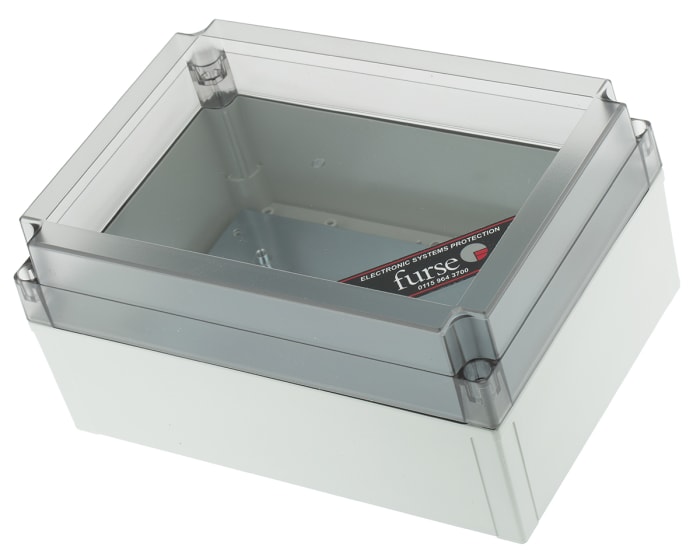Techniniai dokumentai
Specifikacijos
Markė
WJ FurseProdukto aprašymas
Overvoltage Protectors for Low Current Mains Supplies
Over Voltage protectors for low current mains power supplies to protect electronic equipment e.g. CCTV cameras, alarm panels and telemetry equipment.
Approvals
Network Rail approval (ESP 240-5A/BX) – PA05/02896. NRS PADS ref: 087/037285
Transient Voltage Suppressors (Modules,Industrial)
Voltage surges, often referred to as spikes or transient overvoltages are typically caused by switching of fluorescent lights, fuses blowing or nearby lightning activity. The worst voltage surges are usually caused by lightning activity and can reach up to 6000V, with current surges of up to 3000A. The maximum size of the voltage and current surges depends on the location within the buildings wiring system. BS6651:1999 Annex C which was replaced in August 2008 by BS EN 62305-4:2006 is complemented by BS EN 61643-11/12 and covers location categories and provides guidance on protection of electronic equipment. For mains power systems, Types I, II and III are used. Surge protection devices not designed to fit into these categories may only provide limited protection and the equipment they protect may suffer damage.
Sandėlio informacija laikinai nepasiekiama.
Patikrinkite dar kartą.
P.O.A.
1

P.O.A.
1

Techniniai dokumentai
Specifikacijos
Markė
WJ FurseProdukto aprašymas
Overvoltage Protectors for Low Current Mains Supplies
Over Voltage protectors for low current mains power supplies to protect electronic equipment e.g. CCTV cameras, alarm panels and telemetry equipment.
Approvals
Network Rail approval (ESP 240-5A/BX) – PA05/02896. NRS PADS ref: 087/037285
Transient Voltage Suppressors (Modules,Industrial)
Voltage surges, often referred to as spikes or transient overvoltages are typically caused by switching of fluorescent lights, fuses blowing or nearby lightning activity. The worst voltage surges are usually caused by lightning activity and can reach up to 6000V, with current surges of up to 3000A. The maximum size of the voltage and current surges depends on the location within the buildings wiring system. BS6651:1999 Annex C which was replaced in August 2008 by BS EN 62305-4:2006 is complemented by BS EN 61643-11/12 and covers location categories and provides guidance on protection of electronic equipment. For mains power systems, Types I, II and III are used. Surge protection devices not designed to fit into these categories may only provide limited protection and the equipment they protect may suffer damage.

